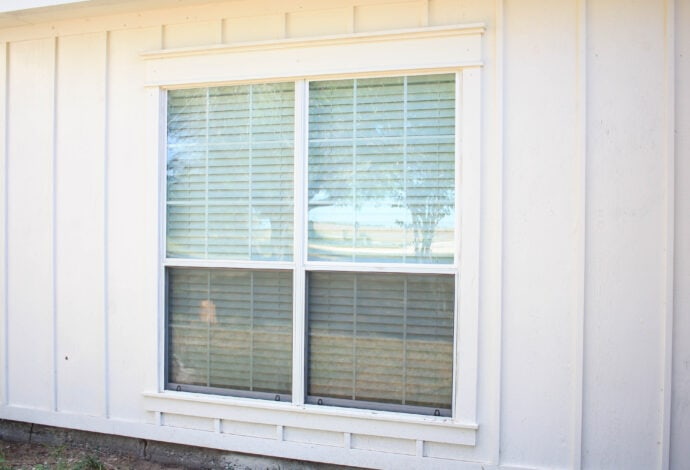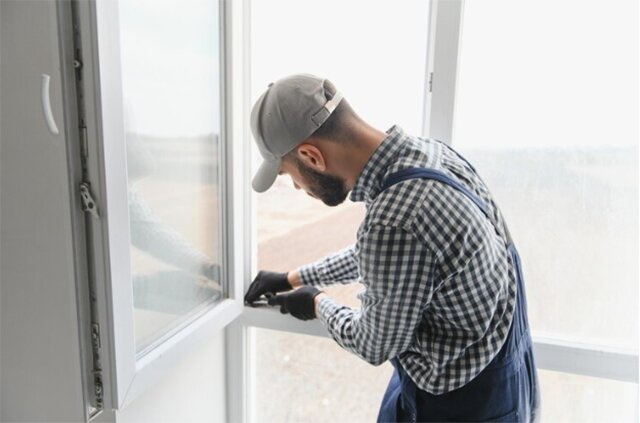English


Views: 222 Author: Dream Publish Time: 2025-01-27 Origin: Site











Content Menu
● Benefits of Wrapping Windows in Aluminum
● Step-by-Step Guide to Wrapping Window Trim
>> Step 1: Measure Your Windows
>> Step 3: Cut the Aluminum Trim Coil
>> Step 4: Bend the Aluminum Trim
>> Step 5: Install the Bottom Piece
>> Step 6: Install Side Pieces
>> Step 7: Install the Top Piece
>> Step 8: Seal Edges with Caulk
● Additional Considerations Before Wrapping Windows
● Advanced Techniques in Window Wrapping
● Maintenance Tips After Installation
● Common Mistakes to Avoid When Wrapping Windows
● Environmental Impact of Using Aluminum vs Other Materials
● Case Studies Showcasing Successful Installations
>> Case Study 1 – Residential Home Transformation
>> Case Study 2 – Commercial Building Renovation
● Expert Interviews Discussing Best Practices
>> Expert Insight #1 – Importance of Planning
>> Expert Insight #2 – Choosing Right Tools
● FAQ
>> 1. What is aluminum wrapping?
>> 2. How long does it take to wrap windows?
>> 3. Can I wrap windows myself?
>> 4. Is aluminum wrapping worth it?
>> 5. How do I maintain wrapped windows?
Wrapping window trim in aluminum is a practical and effective method to enhance the durability, energy efficiency, and aesthetic appeal of your windows. This comprehensive guide will provide you with a detailed step-by-step approach to wrapping window trim in aluminum, including necessary tools, techniques, and tips for a successful installation. Additionally, we will explore advanced techniques, maintenance tips, and the environmental impact of using aluminum compared to other materials.

Aluminum wrapping offers several advantages:
- Durability: Aluminum is resistant to rot, rust, and pests, making it an excellent choice for long-term protection against environmental factors.
- Low Maintenance: Unlike wood trims that require regular painting or staining, aluminum wraps only need occasional cleaning with soap and water to maintain their appearance.
- Energy Efficiency: Properly wrapped windows can help improve insulation, reducing heating and cooling costs by minimizing air leaks around frames.
- Aesthetic Appeal: Aluminum wraps come in various colors and finishes, allowing homeowners to choose options that complement their home's exterior design effectively.
- Protection Against Elements: Aluminum acts as a barrier against moisture, wind, and UV rays, prolonging the life of your window frames and preventing damage from harsh weather conditions.
Before starting the wrapping process, gather the following materials:
- Aluminum trim coil (available in various colors)
- Measuring tape
- Utility knife or tin snips
- Aluminum brake (for bending the aluminum)
- Caulk (for sealing edges)
- Trim nails or roofing nails
- Safety goggles and gloves
Accurate measurements are crucial for cutting the aluminum trim to fit perfectly. Measure both the height and width of the window frame.
1. Measure the height on both sides of the window.
2. Measure the width of the top, middle, and bottom of the window trim.
3. Use the largest measurements for cutting your aluminum trim coil.
4. Add an extra inch to each measurement for overlap.
Clean the window frame thoroughly to remove any debris or old paint that may hinder adhesion. A clean surface ensures that the new trim will adhere properly and provide a seamless finish.

Using your measurements, cut strips of aluminum trim coil.
1. Lay out the aluminum coil on a flat surface.
2. Score it with a utility knife along your measured line.
3. Use tin snips to cut along the scored line for a clean edge.
Using an aluminum brake, bend the strips of aluminum to fit around the window frame.
1. Place one end of your cut aluminum into the brake machine.
2. Follow your measurements to create bends that will wrap around each side of the window.
3. Ensure that bends are sharp and precise for a professional look.
Begin wrapping your window starting from the bottom.
1. Position it at the bottom of the window frame.
2. Use trim nails or roofing nails to secure it in place.
3. Ensure that it slightly overhangs to allow for water drainage.
Next, attach the vertical side trims.
1. Position each side piece so that it overlaps with the bottom piece.
2. Secure them with nails, ensuring they are tightly fitted against the window frame.
Finally, place the top trim piece over the vertical sides.
1. Ensure that it overlaps both side pieces.
2. Secure it with nails as well.
3. Check for levelness at this stage to ensure a professional finish.
Once all pieces are installed, apply caulk along all seams and edges where water might penetrate.
1. Use a caulking gun for even application.
2. Smooth out any excess caulk with your finger or a caulking tool for a clean finish.
Before you begin wrapping your windows in aluminum, consider these additional factors:
- Weather Conditions: It's best to perform this task on a dry day without high winds. Moisture can affect adhesion and cause problems during installation.
- Window Type: Different window styles may require different approaches. For instance, bay windows or those with unique shapes may need custom-cut pieces or additional support during installation.
- Existing Damage: Inspect your window frames for any existing damage before wrapping them in aluminum. If there is rot or significant wear, consider repairing or replacing those areas first to ensure a solid foundation for wrapping.
While basic wrapping techniques are sufficient for most standard windows, advanced techniques can significantly enhance both aesthetics and performance:
- Custom Bending Techniques: For windows with unique shapes (like arches), custom bending techniques may be necessary:
1. Use a heat gun carefully on specific areas of aluminum trim where bends are required.
2. Gradually shape it while applying heat; this allows more flexibility without breaking or crumpling the material.
3. Always practice on scrap material first before applying techniques on actual project materials.
- Incorporating Decorative Elements: Consider incorporating decorative elements into your aluminum wraps:
- Moldings: Adding decorative moldings around edges can provide an elegant finish while further protecting seams from moisture infiltration.
- Color Choices: Choose colors that contrast or complement your home's exterior paint scheme; consider using two-tone wraps for added visual interest.
Maintaining wrapped windows is simple; just clean them periodically with mild soap and water to keep them looking fresh. Here are some additional maintenance tips:
- Regularly inspect caulking for any signs of wear or damage.
- Clear out weeds or plants growing around wrap as they can damage it over time.
- Avoid corrosion by ensuring any exposed metal is treated appropriately.
Even experienced DIYers can make mistakes when wrapping windows in aluminum. Here are some common pitfalls:
- Poor Measurements: Failing to measure correctly can lead to ill-fitting pieces that may not provide adequate coverage or protection.
- Neglecting Surface Preparation: Not cleaning or preparing the surface before installation can lead to poor adhesion and premature failure of caulk or other sealants used during installation.
- Ignoring Local Building Codes: Depending on your location, there may be specific building codes regarding exterior modifications like window wrapping. Always check local regulations before starting your project.
When considering materials like vinyl versus aluminum—environmental impacts should be evaluated:
- Recyclability: Aluminum is highly recyclable compared to other materials such as vinyl which often ends up in landfills:
1. When choosing materials—consider sourcing recycled options which reduce overall environmental footprint significantly.
2. Research local recycling programs available within community; many municipalities offer incentives encouraging residents recycle properly.
To illustrate successful applications of aluminum wrapping techniques:
A homeowner decided to wrap their old wooden window trims after experiencing consistent issues with rot and peeling paint due to moisture exposure. The transformation not only improved energy efficiency but also enhanced curb appeal significantly as they chose a stylish color that complemented their home's facade beautifully.
In a commercial property renovation project, contractors opted for aluminum wrapping around all exterior windows as part of an effort to modernize while reducing long-term maintenance costs associated with wood trims that had previously been used extensively throughout older buildings in urban settings.
To gain insights from professionals in this field:
Planning is crucial before starting any project involving aluminum wrapping; proper measurements can save time during installation while ensuring quality results afterward.
Investing in high-quality tools pays off significantly; using durable equipment like reliable brakes ensures cleaner bends which lead directly into better installations overall!
Wrapping window trim in aluminum is an effective way to enhance both durability and aesthetics while minimizing maintenance efforts. By following this guide's detailed steps and tips, you can achieve professional results that protect your home for years to come. Not only does this process improve energy efficiency by sealing gaps that could let air escape, but it also adds value by enhancing curb appeal while providing long-lasting protection against weather elements that threaten wooden frames over time!

Aluminum wrapping involves covering existing wooden window trims with aluminum trim coil to protect against weather damage and enhance aesthetics.
The time required can vary based on experience but typically takes 1–2 hours per window for an experienced installer.
Yes! With proper tools and careful attention to detail, many homeowners can successfully wrap their own windows.
Yes! It provides long-lasting protection against weather elements and reduces maintenance needs compared to traditional wood trims.
Maintenance involves regular cleaning with soap and water, inspecting caulking for wear or damage, and ensuring any exposed metal is treated appropriately.
[1] https://www.weiye-aluminium.com/how-to-wrap-windows-in-aluminum.html
[2] https://integrityroofers.com/what-is-aluminum-capping-for-residential-properties/
[3] https://www.westernstatesmetalroofing.com/blog/how-to-install-window-trim
[4] https://www.homeimprovementandrepairs.com/post/aluminum-window-trim
[5] https://www.improveitmd.com/blog/pvc-coated-aluminum-vs-vinyl-trim-wrap-which-is-better
[6] https://www.youtube.com/watch?v=gBv9dOcq1RU
[7] https://integrityroofers.com/a-complete-guide-to-window-capping/
[8] https://budgetexteriors.com/about-us/blog/8-benefits-of-window-wraps
[9] https://www.youtube.com/watch?v=FtsgvssYwb0
[10] https://todayshomeowner.com/windows/guides/pvc-coated-aluminum-vs-vinyl-trim/
[11] https://www.youtube.com/watch?v=zfQEV0gg0ys
[12] https://sunshinecontractingcorp.com/blog/what-is-trim-capping/
[13] https://www.facebook.com/NextLevelContractors518/videos/want-to-learn-how-to-bend-and-install-aluminum-metal-trim-for-window-exteriors-w/2573537116175012/
[14] https://www.youtube.com/watch?v=r7fltGlArMU
[15] https://duncanhomeinspection.com/site-cannot-be-accessed-from-your-current-location.html
[16] https://www.tiktok.com/@thesidingguy_/video/7393842701248007430
[17] https://www.4feldco.com/articles/what-is-exterior-window-wrapping
[18] https://www.gm-cx.com/how-to-wrap-window-trim-with-aluminum.html
[19] https://www.youtube.com/watch?v=wUMyd3wIXKk
[20] https://www.trimbender.com/guides-videos-for-installing-aluminum-trim
Seven Requirements for External Doors And Windows of Passive Rooms
How Much Do You Know about The Design Standards for Aluminum Alloy Door And Window Dimensions?
Welding Vs Stainless Steel Fabrication: Understanding The Manufacturing Process Differences
Stainless Steel Fabrication Vs Powder Coated Steel: Durability And Cost Comparison
CNC Machining Vs Stainless Steel Fabrication: Pros And Cons for Industrial Use
Stainless Steel Fabrication Vs Carbon Steel Fabrication: Key Differences Explained
Stainless Steel Fabrication Vs Aluminum Fabrication: Which Is Right for Your Project?
Stainless Steel Grades 201 Vs 304: Cost Vs Performance Breakdown
316L Vs 316 Stainless Steel Grades: Which Is Better for Corrosion Resistance?
Comparing Austenitic Vs Martensitic Stainless Steel Grades: What You Need To Know?
